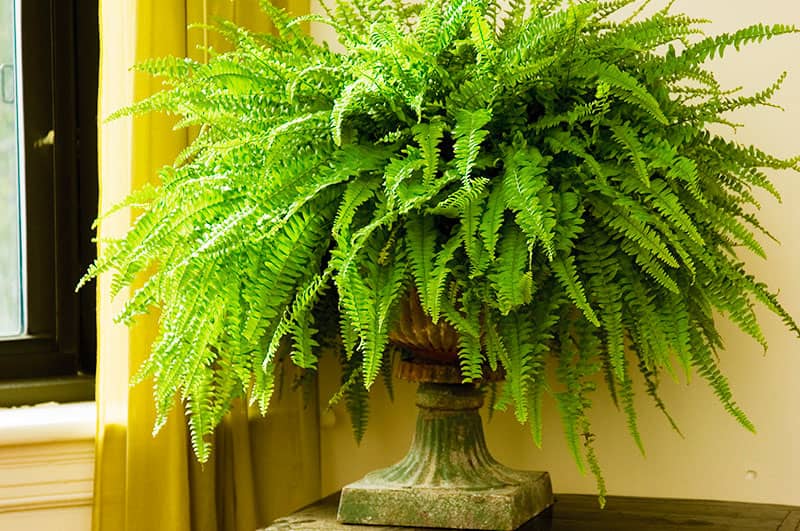A BEGINNERS GUIDE: CARING FOR HOUSEPLANTS
Caring for indoor plants is really pretty easy. Plants need light, water and fertilizer to grow and flourish. Different plants have different requirements and some plants are easier than others. If you are a beginner – or if you are really busy and need something low maintenance – start with one of our easy care houseplants. These plants are durable, will handle a range of indoor temperatures in your home and will withstand a bit of watering neglect.
HOW MUCH LIGHT DOES MY INDOOR PLANT NEED?
This is a key question and one you need to ask before deciding which houseplant to bring home. Light requirements are divided into 3 groups:
- Full Sun
4 to 6 hours a day direct sun – try a southern exposure. - Medium Light
2 to 3 hours of direct sun, or 6 to 8 hours of bright indirect light, typically eastern or western exposure, or perhaps southern exposure but not placed directly near a window. - Low Light
No direct sunlight, but some indirect light, or even 8 or more hours a day of electric lights (regular incandescent, fluorescent, etc.)
Some plants are more sensitive to light fluctuations than others. For best results pick a houseplant that matches your room’s available light. Look at the plant label to see its group, or just ask us.
HOW TO WATER YOUR INDOOR PLANTS:
After determining the right amount of light, you need to know a little bit about watering. Surprisingly enough, the #1 reason houseplants fail to thrive is OVERWATERING, and that is because many people look at the top surface of the soil to decide when to water. Soil often looks dry on top, even when the plant has plenty of moisture. The real question is how moist the soil is below the surface.
Stick your finger right into the soil to a depth of 2” (about to your second knuckle). Gently pull it out look near the knuckle. You should be able to see if the soil is dry, slightly moist or very wet. Sort of like a human cake tester.
- If the soil is dry at this 2” depth, it is time to water.
- If the soil is slightly moist, wait a day or more.
- If the soil is downright wet at this depth, cut back on how frequently you water.
If possible, water your plants in the morning and use tepid (slightly warm) water.
Water thoroughly and slowly, but stop as soon as water runs through the drainage holes. Make sure that the soil is thoroughly wet when you are finished. If the water runs through the drainage hole too quickly, the pot may be crammed with roots and contain too little soil. In this case it may be time to repot.
It’s important not to leave excess water in the saucer – roots can rot if constantly wet. An alternative is to fill your drainage dish with a layer of small pebbles or river rocks. The rocks will keep the bottom of the pot elevated over excess water.
DO I NEED TO FERTILIZE MY HOUSEPLANTS?
We regularly feed our houseplants. When you bring it home it is important to continue this care – especially if it is a flowering plant. As a rule of thumb, houseplants should be fed every other week in spring, summer and early fall. As light levels diminish in November, your plant will need less fertilization – once a month or less. Using a complete liquid fertilizer will ensure healthy, thriving plants. Follow package instruction carefully – too much fertilizer can be worse than too little.
Follow these three guidelines and even the most notorious plant killer can enjoy happy healthy plants in many rooms in their home, dorm or office.

